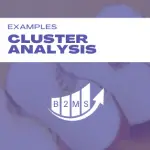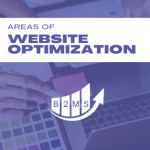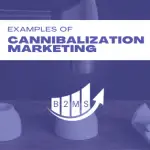Making the most of artificial scarcity in marketing
What is artificial scarcity? (Definition)
Artificial scarcity involves deliberately reducing supply, for example by limiting production, in order to generate higher demand. The goal is for demand for a product or service to exceed supply, thus realizing a higher price and faster buying decisions.
Artificial scarcity or artificial shortage is an economic theory that suggests that by limiting the availability of goods, prices will rise and demand will increase. It is also a marketing strategy in which companies create artificial scarcity to make their products appear more exclusive and desirable to consumers. Artificial scarcity can also be used as a means to control prices in order to maximize profits for producers.
Artificial scarcity is also called artificial limitation.

Use case examples of artificial scarcity
There are a variety of examples where scarcity is deliberately created by a manufacturer or service provider. Luxury products such as watches are often created in limited editions. Likewise, there are often special models of an existing product for a short period of time or an exclusive customer base.
However, a shortage is not only artificially created in order to sell products or services – usually at a higher price – but also takes place throughout the entire marketing funnel.
Different strategies of artificial scarcity
Essentially, a distinction can be made between three models: Temporal artificial scarcity, the exclusivity of an offer for a specific target group, and the number of available products/services.
Temporal artificial scarcity
In the case of temporal scarcity, offers or products are limited to a specific time. This can be that a certain price is only available until a certain time. For example, a product launch may involve a one-time payment instead of a monthly subscription.
In addition, products such as pumpkin candy or hot beverages may only be available for the Halloween season.
Similarly, discounts are often limited in time and are only valid for a specific period of time.
Target group scarcity (exclusivity)
Products or services are sometimes only available or redeemable to certain target groups. This can be limited in time before everyone gets the opportunity, or be exclusive.
Platforms like ClubHouse or LunchClub that require an invitation from an existing member are good examples. But also exclusive offers or discounts for newsletter subscribers or other members are conceivable.
Artificially limited availability (number of items/inventory)
Online retailers or even product launches often deceive with limited availability of goods. This can be for new products – especially in the technology industry – in limited quantities so that demand exceeds supply, creating a marketing buzz and leaving no time to decide whether or not to buy the product – if you can get it.
Online retailers often indicate that there are only a few items left in the assortment. This is often coupled with information about how many people are currently looking at the product. This artificial scarcity creates a sense of urgency.
Artificial shortage in B2B Marketing
Not only in B2B (business-to-business) marketing but also in B2C (business-to-consumer) we find marketing funnels or sales stages/cycles that a potential customer is in. Marketers often use scarcity to generate leads. For example, books or eBooks are only offered for a short time, or the number of attendees in a webinar or live event is artificially limited.
Artificial scarcity in online retail/eCommerce
The marketing concept of artificial scarcity is used primarily – also due to its simple, technical implementation – in retail and eCommerce. For example, many online retailers use the following methods in their Shopify marketing to create artificial scarcity and increase demand.
Limited discounts and special promotions
Offers, discounts, or special promotions are often limited in time or to a specific audience. This is to create a sense of urgency. Discounts or exclusive add-ons are often offered to newsletter subscribers or social media followers.
When it comes to the number of goods, low availability is often deliberately depicted and the inventory is artificially scarce.
Up-sell
Artificial scarcity is used as an up-sell method, especially for bundled offers. This effect works particularly well with buyers who have already purchased a product or service. “Since you have already bought X, we are offering Y exclusively for you at a reduced price. This offer is only valid on this page, at this moment.”
Price increase announcements as artificial scarcity
An upcoming price increase can serve as a sales promotion and can also be defined as an artificial shortage. The current price is only valid for a certain time.
Artificial scarcity with pre-orders
Pre-orders are an ingenious marketing model if you already have an audience. It has several advantages: First, it is an excellent marketing communication opportunity to draw attention to the product. Secondly, the demand can already be forecasted. Manufacturers can first produce a small number of units and wait for the demand. This is not only helpful from a marketing and logistic point of view, but also from a cash flow perspective so that not too much cash is locked up in the inventory.
As a third point, it combines the use cases of artificial scarcity – an offer with an exclusivity applies. One is the first to get the product before it is available on the market. At the same time, not everyone may have access to this offer, but only a small part of the society. Often special offers accompany the pre-order, which are then no longer available in regular stores. These can be hand-signed book copies, exclusive merchandise, or even a better price.

Sascha is a Lifecycle Marketing Consultant with over 8 years of digital marketing experiences in Silicon Valley, the UK, and Germany.
After leading the demand generation for a 100+ million company, he decided to venture out on himself. He’s now helping clients to attract and convert more leads and customers.
His main focus are SEO, paid media & marketing automation – all with the focus to tie marketing campaigns to revenue.
Sascha has been featured in industry publications.



